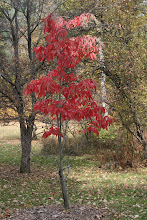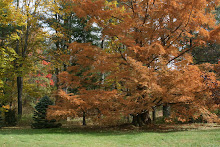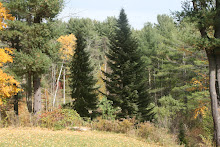Thursday, December 6, 2012
CAMASSIA PLANTS AT PINE HOLLOW ARBORETUM
A purple flowering plant which grows on the shore of Greenhouse Pond and photographed by John Abbuhl is being featured in the 2013 Pine Hollow Arboretum Calendar. The plant is a Camas (Camassia) and it was cool to discover what an interesting plant the camas is. Our caption for under the photo was getting longer and longer until we decided we had to cut it down to a reasonable length. I figured a short write-up on this small species could share our discovered information with others. John Abbuhl said the camas was a native plant but not native to the shore of Greenhouse Pond where he had planted it. I found out that native was true if you are talking about the large expanse of North America where the camas naturally ranges. The perennial six-petaled plant is native to Southern British Columbia to Northern California and east to Montana. The plant existed in great numbers in meadows and could color the whole meadow in purple when they flowered. Later in history settlements reduced the prairies filled with camus because of grazing by cattle and hogs. There are still places in the Great Basin out West where they fill the landscape.
Camassia species were an important food staple for natives and even for early settlers in parts of the West. They were harvested in Autumn with the bulbs roasted or boiled. The experts say camas bulbs when cooked taste like a sweet potato but sweeter. I wonder if they have unexplored agricultural potential?.
The bulbs can be dried and pounded into flour. Folklorists have suggested the camas was also a important food source as a "cultivated plant" among the Tillamooks and other coastal peoples. These natives used burning to clear space for camas to grow out from under the forest cover. They were the second most popular trade good behind only dried salmon. Attention SCRABBLE players: the Kutchai called the camas "xapi". Common names for the plant are "Wild Hyacinth" and "Bear Grass".
There is no danger the camas are going to spread wildly and take over large sections of Pine Hollow Arboretum. John Abbuhl said that even though they were planted years ago there are only the original four camas plants growing in one small spot. The current year (2012) only two of them bloomed. Still it is worth the effort to find these out of their range but never-the-less interesting perennials. Deer do not like them which is an advantage around here.
----- Alan Casline
Subscribe to:
Comments (Atom)












